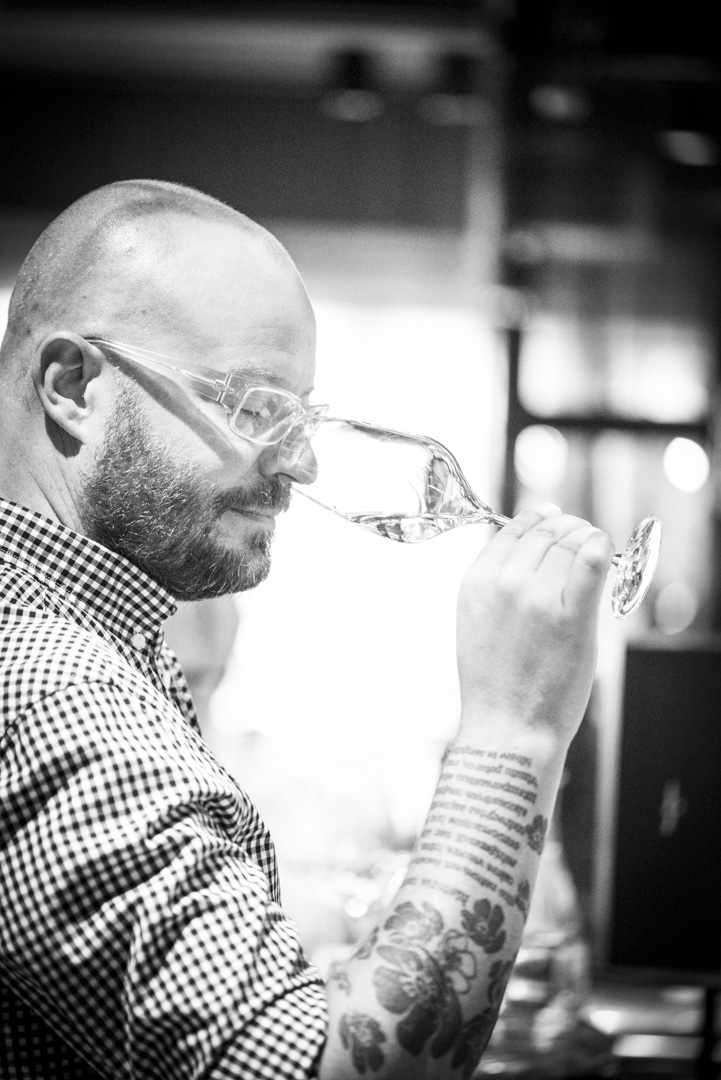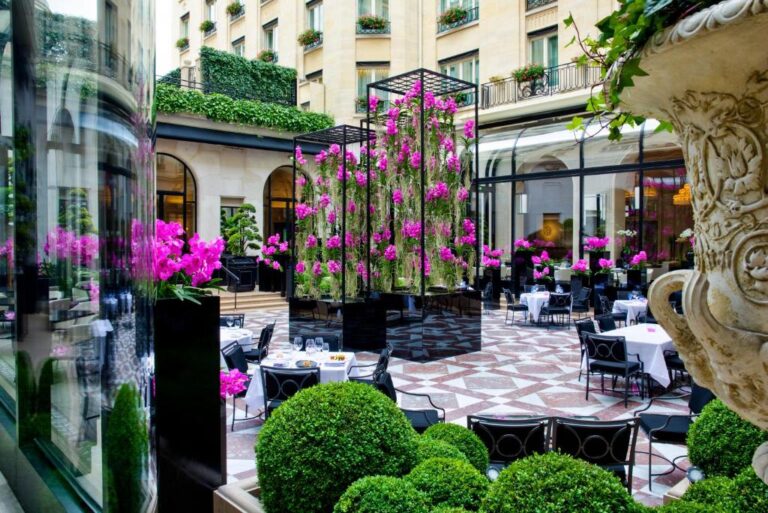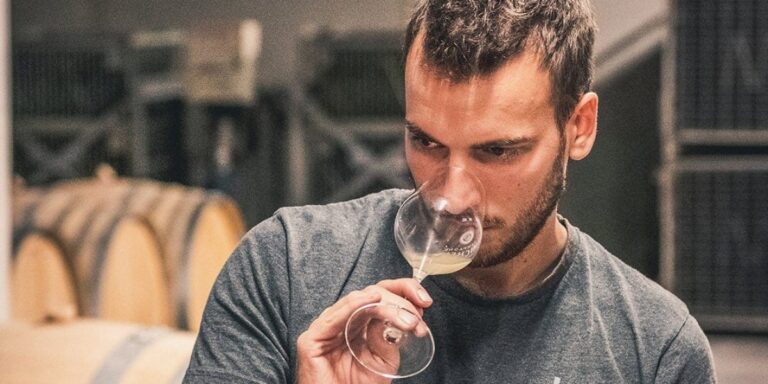Brut Champagne refers to a dry sparkling wine with a particular level of sweetness—or rather, a lack thereof. Originating from the Champagne region of France, this beverage is distinguished by its low sugar content.
Estimated reading time: 12 minutes

Understanding Brut Champagne
In the classification of Champagne, sweetness is an essential factor. Champagnes are categorized by how much sugar is added after the second fermentation process, a step known as dosage. The term ‘Brut’ is indicative of a style that has a sugar content typically less than 12 grams per liter. This level of sugar classifies the Champagne as dry.
Here’s a simple guide to sugar levels in Champagne:
| Classification | Sugar Content (grams per liter) |
|---|---|
| Brut Nature | 0-3 |
| Extra Brut | 0-6 |
| Brut | 0-12 |
| Extra Dry | 12-17 |
| Dry | 17-32 |
| Demi-Sec | 32-50 |
| Doux | 50+ |
You should know that Brut Champagne is the most popular style due to its balance between dryness and the natural sweetness of the grapes. It is versatile, pairing well with a variety of foods, an attribute that contributes to its widespread favor.
When selecting a Brut Champagne, consider the occasion and your taste preference for sweetness. Remember, a glass of Brut Champagne offers a sophisticated experience that’s both celebratory and enjoyable in its nuanced finesse, without the overt sweetness present in other sparkling wines.
The Champagne Making Process
Your journey to understanding champagne begins in the vineyard and ends with the pop of a cork. Each step in champagne production is meticulously executed to ensure the ultimate sparkle and finesse in your glass. Follow the path from grape selection to the final twist of the bottle that delivers the world’s most renowned sparkling wine.
Grapes and Grape Varieties
Champagne is a product distinct to its French origins, primarily crafted in the Champagne region. The quality of champagne begins with the selection of suitable grapes, including Chardonnay, Pinot Noir, and Pinot Meunier. These grapes form the backbone of traditional champagne blends. Minor varieties like Pinot Gris, Pinot Blanc, and Petit Meslier can also be incorporated but in smaller quantities. The chalky soils and cool climate of the region bestow a unique terroir, influencing the flavor and acidity of the grapes.
Fermentation Techniques
Upon harvest, grapes undergo primary fermentation, essentially converting grape sugar into alcohol using yeast. This results in a base wine that is still, not fizzy. Champagne’s effervescence is a product of secondary fermentation, achieved through the traditional method. Winemakers add a mixture called liqueur de tirage, containing sugars and additional yeast, to induce this second phase in a sealed bottle. This not only produces the bubbles but also contributes to the complexity and taste of the final champagne.
Here’s a brief overview of fermentation steps:
- Primary: Sugar to alcohol (still wine)
- Secondary: Inside the bottle (creates bubbles)
Aging and Dosage
After secondary fermentation, champagne is aged on its lees, the spent yeast cells, inside the same bottle. The length of this aging process is crucial; while non-vintage champagnes are aged for at least 15 months, vintage champagnes may be aged for three years or more. The aging period contributes to the champagne’s flavor complexity and aromatic maturity.
Once aging is adequate, the sediment is expertly removed in a process called disgorgement. The final stage of production is the addition of the dosage, a mix of wine and sugar that determines the sweetness level of the champagne. The dosage is essential for refining the final taste profile, bringing balance and harmony to the champagne’s acidity and character.
Champagne Styles and Types
Champagne offers a diverse palette of styles and tastes, which are primarily distinguished by their level of dryness or sweetness. The classification ranges from the driest, Brut Nature, to the sweetest, Doux. You’ll also discover the importance of vintage in determining the quality and character of champagne.
From Brut to Doux
Champagnes are classified according to the dosage, which is the amount of sugar added after the second fermentation. The terms you may encounter include:
- Brut Nature: Also known as Ultra Brut or Zero Dosage, containing less than 3 grams of sugar per liter.
- Extra Brut: Slightly sweeter than Brut Nature, with sugar levels between 0-6 grams per liter.
- Brut: The most common style, with a dry taste and sugar content under 12 grams per liter.
- Extra Dry: Contrary to its name, it’s a bit sweeter than Brut, with sugar levels between 12-17 grams per liter.
- Sec: Meaning ‘dry’ in French, yet sweeter than Extra Dry, with 17-32 grams of sugar per liter.
- Demi-Sec: A sweet champagne, which has 32-50 grams of sugar per liter.
- Doux: The sweetest style, with more than 50 grams of sugar per liter.
Taste Profile:
- Dry Sparkling Wine (Brut, Extra Brut, Brut Nature): You’ll experience a crisper, more austere taste.
- Sweeter Champagne (Demi-Sec, Doux): These offer a richer and often fruitier flavor profile.
It’s crucial for you to match the champagne style with your personal taste preference or the occasion, whether you’re enjoying a toast or pairing the champagne with a meal.
The Significance of Vintage
A vintage champagne is made from grapes harvested in a single year, showcasing the unique characteristics of that year’s climactic conditions. In contrast, non-vintage champagnes blend multiple year’s harvests for consistency.
- Vintage Champagne:
- Qualities: Often higher quality with a potential to age well.
- Names to Know: For example, a renowned vintage champagne is Dom Pérignon.
- Non-Vintage Champagne:
- Purpose: Aimed at maintaining a consistent house style year after year.
- Best Enjoyed: Typically intended for consumption within a few years of release.
Vintage champagnes are typically released only in years that the winemaker deems exceptional, which is why they may be pricier and sought after by collectors and connoisseurs. Knowing the difference between vintage and non-vintage can influence your selection based on taste preference, occasion, and budget.
Characteristics of Brut Champagne
Brut Champagne is synonymous with a dry taste profile and a high level of acidity, making it one of the most popular styles for those who appreciate a crisp and refreshing sparkling wine. Its meticulous balance of flavors ensures that no one characteristic overwhelms the palate.
Flavor Profile and Acidity
Your experience with Brut Champagne will involve a complex flavor profile that typically features stone fruit such as peaches and apricots, hints of almond notes, and a sharp minerality that can stimulate the palate. The acidity in Brut Champagne is usually highly acidic, contributing to its crisp and lively character. This acidity is integral to the balance of the wine, ensuring that the subtle sweetness derived from the grape does not make the Champagne feel heavy or cloying.
- Balance: Expertly achieved between acidity and fruitiness
- Key flavors: Stone fruit, citrus, and almond notes
- Acidity: High, providing freshness and structure
Color and Body
The color of Brut Champagne can range from pale gold to a more pronounced golden hue, reflective of the grape varieties used and the length of time spent aging. When it comes to the body, Brut Champagne is typically described as light-bodied, indicating a wine that is elegant and airy rather than rich and full. The light body also complements the high acidity and intricate flavors, completing the overall sensation that makes Brut Champagne a sought-after drink for various occasions.
- Color spectrum: Pale to medium gold
- Body: Light, enhancing the drink’s refreshing quality
Serving and Enjoying Brut Champagne
When selecting a Brut Champagne for your celebrations or dinner parties, consider how its crisp and dry profile pairs with various foods, and how best to serve it to enhance its effervescence and nuanced flavors.
Food Pairings
Your Brut Champagne is a versatile choice that complements many dishes. Aim to pair it with foods that mirror its high acidity and complexity.
- Seafood Dishes: The lively acidity of Brut Champagne cuts through the richness of seafood like lobster and oysters, making it a classic pairing.
- Soft Cheeses: Opt for soft, creamy cheeses which the fine bubbles of Brut can cleanse from the palate.
- Pasta and Risotto: Choose lighter, cream or lemon-based pasta and risotto dishes to accompany your Brut Champagne.
- Caviar: The saltiness of caviar is beautifully balanced by the crispness of the Champagne.
- Desserts: Although Brut is dry, it can pair well with certain desserts. Choose those that are not overly sweet, such as fruit tarts.
This is not an exhaustive list, but it emphasizes selections that will likely enhance your champagne experience.
Glassware and Serving Temperature
To fully appreciate Brut Champagne, serve it in the proper glassware at the right temperature.
- Champagne Flute: A tall, slender flute encourages the steady stream of bubbles and concentrates the bouquet for your nose.
- White Wine Glass: A white wine glass can also be suitable, as it allows the wine to breathe and the complex aromas to develop.
Your Brut Champagne should be served chilled, ideally between 45°F to 48°F (7°C to 9°C). Lower temperatures can suppress the aroma and flavor while higher temperatures can make the Champagne seem flatter.
Remember, while Brut Champagne is a benchmark for toasts and celebration, its versatility with food and the importance of serving it correctly can elevate your experience considerably.
Global Perspectives on Sparkling Wine
When you explore sparkling wines, you’ll find that every region imparts its own signature on the effervescent drink, from the dry complexity of Champagne to the sweet bubbles in other world regions.
Comparing with Other Regions
While Northeastern France is renowned for its iconic Champagne, it’s important to understand how this compares to other prominent wine regions. Champagne is known for its high-quality standards, governed by strict laws that dictate production methods, including secondary fermentation in the bottle. This region often uses a blend of white wine grapes or solely Chardonnay in Blanc de Blancs, while Blanc de Noirs is made from black grape varieties. You’ll taste the intricacies of these wines, including the balance of dryness and residual sugar, shaped by the cooler climate and historical expertise.
In contrast, other regions, such as Italy and Spain, offer their unique versions of sparkling wines—Prosecco and Cava, respectively. Prosecco is generally fruitier and lighter, with a tendency towards slightly sweeter profiles due to its added sugar during the second fermentation in tanks, rather than bottles. Cava, hailing from Spanish wine regions, offers a diversity of styles, from rich and creamy to more mineral and dry.
| Aspect | Champagne | Prosecco | Cava |
|---|---|---|---|
| Region | Northeastern France | Italy | Spain |
| Sugar Addition | Dosage (after disgorgement) | Second fermentation | Second fermentation |
| Typical Dryness | Brut to Ultra Brut | Extra Dry to Dry | Brut to Brut Nature |
| Fermentation Method | Bottle (Traditionelle) | Tank (Charmat) | Bottle or Tank |
Alternative Sparkling Wines
Beyond these well-known names, sparkling wines from regions such as Australia or South Africa are gaining recognition. Australian sparkling wines, particularly from cooler areas like Tasmania, are developing a reputation for their bubbly vivacity and range of styles, from sweet to extremely dry. South African sparklers, often referred to as Cap Classique, use the traditional method similar to Champagne but with a distinct African terroir influence.
Some of these regional wines are non-vintage, offering consistency year after year, while others highlight the uniqueness of a single year’s harvest, adding to the diversity available to you. Across different regions, producers play with levels of residual sugar to create an array of sparkling wines, catering to a broad palate range from sweet to ultra-dry, known as Brut Nature.
| Region | Notable Sparkling Wine | Typical Characteristics |
|---|---|---|
| Australia | Tasmanian Sparkling Wines | Diverse, with dry to sweet range |
| South Africa | Cap Classique | Traditional method, unique terroir influence |
In exploring the world of sparkling wines, your personal taste preferences can guide you through a multitude of regions and styles, from the strictly regulated Champagnes to the more varied and experimental bubblies of the New World.
Recognizing Top Champagne Brands
When exploring the world of Champagne, you’ll encounter a variety of brands that embody excellence and tradition. Knowing the notable houses and understanding the labels will enhance your appreciation and choice of Champagne.
Prominent Champagne Houses
Champagne is not just a drink, but a region in France renowned for its sparkling wine production. When you select a bottle, the name on the label is your first indication of its heritage. Here are some Champagne houses that have established themselves as leaders in quality and finesse:
- Veuve Clicquot: Renowned for their Yellow Label, a classic blend with a balance of power and fineseness.
- Perrier-Jouët: Known for their floral bouquet and elegance, especially in their prestige cuvée Belle Epoque.
- Taittinger: Offers a distinctly high acidity level, contributing to its fresh and lively profile.
- G.H. Mumm: Recognizable by their red ribbon label, Mumm is a symbol of celebration and achievement.
- Pommery: A historic brand that is synonymous with innovation and a characteristically fresh, vibrant style.
- Laurent-Perrier: The house favors Chardonnay, leading to a lighter, delicate, and highly sought-after Champagne.
Labeling and Quality Markers
The label on a Champagne bottle is your guide to its contents, offering clues about its taste profile and the quality of the wine inside. Here are key terms and designations you should look for:
- Brut: Indicates a dry Champagne with very little residual sugar.
- Extra Sec: Slightly sweeter than Brut but still not overly sweet, perfect for those who prefer a touch more richness.
- NM (Négociant Manipulant): A producer who buys grapes and makes the Champagne, including many large Champagne houses.
- RM (Récoltant Manipulant): A grower-producer who makes Champagne exclusively from their vineyards.
Certain terms on a label, like “Premier Cru” or “Grand Cru,” refer to the quality of the vineyards the grapes hail from, indicating high standards of the resulting Champagne. By understanding these terms and recognizing the reputations of these Champagne houses, you’re well-equipped to select a bottle that suits your taste and occasion.
Frequently Asked Questions
Understanding the nuances of champagne can enhance your enjoyment and appreciation of this celebrated beverage. The following frequently asked questions address common points of curiosity regarding Brut champagne.
What distinguishes Brut from Extra Dry champagne with respect to sweetness?
Brut champagne is drier, meaning it has less residual sugar compared to Extra Dry champagne. While the term ‘Extra Dry’ might suggest a drier champagne, it is actually slightly sweeter than Brut, which can contain up to 12 grams of residual sugar per liter.
How does Brut Champagne compare with Prosecco in terms of style and flavor profile?
Brut Champagne is typically more complex, with a greater emphasis on minerality and yeast-derived flavors, owing to its longer aging process and traditional method of secondary fermentation in the bottle. Prosecco, while also sparkling, has a fruitier and lighter taste profile due to its production in large tanks and shorter maturation period.
What are the price ranges typically associated with Brut Champagnes?
Brut Champagnes can vary widely in price, ranging from budget-friendly options starting around $30 to several hundred dollars for prestigious vintages and luxury cuvées. The pricing reflects factors such as brand prestige, aging process, and quality of the grapes.
Can you explain the taste differences between Demi-sec and Brut Champagnes?
Demi-sec champagne is noticeably sweeter to the taste than Brut. While Brut contains up to 12 grams of sugar per liter, Demi-sec has between 32 and 50 grams of sugar per liter, offering a richer and sometimes fruity palate that pairs well with desserts.
What terminology is used to describe a sweet Champagne variant?
The term “Doux” is used to describe the sweetest style of Champagne available. Doux champagnes have more than 50 grams of sugar per liter, making them significantly sweeter than Brut or even Demi-sec variants.
In the Champagne classification, how does SEC compare to Brut regarding sugar content?
Sec champagne contains more residual sugar than Brut but is drier than Demi-sec, with sugar levels typically between 17 and 32 grams per liter. It offers a balanced taste that is neither too sweet nor too dry, often serving as a versatile middle-ground option for those who prefer a hint of sweetness in their bubbly.





